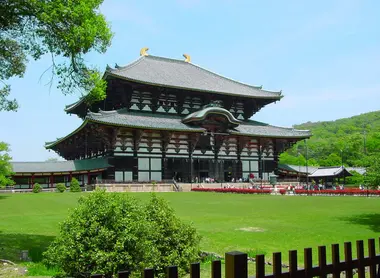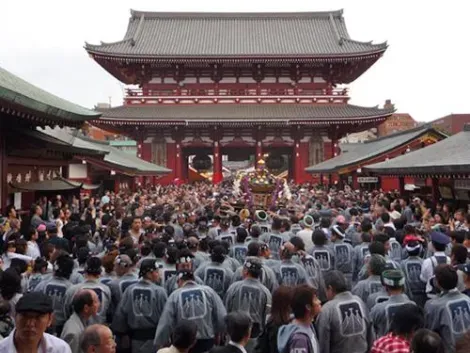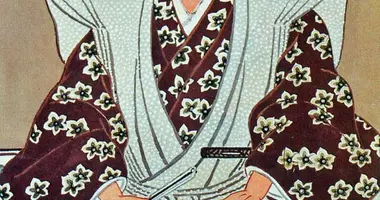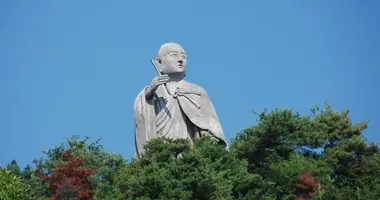Japanese History: Simplified Timeline
- Published on : 23/04/2020
- by : R.A.
- Youtube
Summary of key dates in Japan
The history of Japan is both rich and old, and it is often difficult to situate the many Japanese historical sites in time. To simplify, here is a simplified chronology of the History of Japan.
Préhistoire et Antiquité (jusqu'au 6e siècle)
La période Jōmon (-13 000 av. J-C à -400 av. J-C) voit apparaître les premières poteries au monde, avec des motifs de cordes, ainsi qu'un mode de vie sédentaire basé sur la chasse, la pêche et la cueillette. La période Yayoi (-400 av. J-C à 300 ap. J-C) marque l'introduction de la riziculture irriguée et des techniques de métallurgie(bronze puis fer) depuis la Corée et la Chine, entraînant une hausse démographique et l'apparition de chefferies locales.
La période Kofun (3e au 6e siècle) est caractérisée par l'érection de grands tumuli funéraires en forme de trou de serrure, dont certains attribués aux premiers empereurs légendaires. Le clan Yamato s'impose progressivement comme centre politique dans la région du Kansai. Des relations diplomatiques et des échanges culturels se développent avec les royaumes coréens de Baekje, Silla et Koguryo, qui introduisent le bouddhisme, l'écriture chinoise et de nouvelles techniques artisanales.
Période antique (VIe – XIIe siècles)
La période d'Asuka (538-710) voit la pénétration du bouddhisme, l'adoption d'une constitution et la mise en place d'un État centralisé sur le modèle de la Chine des Sui puis des Tang. L'époque de Nara (710-794) est marquée par l'affirmation du pouvoir impérial, la fondation d'une capitale permanente, le développement de grands monastères bouddhiques comme le Tōdai-ji et son Daibutsu géant, et une production artistique brillante influencée par les modèles continentaux.
Durant l'époque de Heian (794-1185), une culture raffinée se développe autour de la cour impériale installée dans la nouvelle capitale de Heian-kyō (Kyoto). C'est l'âge d'or de la littérature classique avec des œuvres majeures comme Le Dit du Genji de Murasaki Shikibu. L'architecture bouddhique atteint des sommets de raffinement et de symbolisme avec des temples comme le Byōdō-in. Cependant, le pouvoir de l'empereur s'affaiblit au profit de grands clans aristocratiques comme les Fujiwara, tandis que la classe des guerriers (samouraïs) prend de l'importance face à l'instabilité croissante.
> Before the 3rd century AD. JC: Prehistory
Prehistory (combining the Jomon and Yayoi periods) sees the first communities, engineering and agriculture appear. This is the time of the mythical founding of Japan by Emperor Jimmu and that of the construction of the temple of Ise.
> 300-538: the Kofun period
Japanese protohistory is marked by the Kofun, these monumental tombs visible in particular in Sakai and Nara. An authority begins to appear in the plain of Yamato (Nara).
> 538-710: the Asuka period
The history of Japan is enriched and modeled on Chinese civilization. Introduction of Buddhism, writing, architecture, and sculpture. Construction of the first Japanese temple: the Horyuji (in the city of Nara).
> 710-794: Nara period
Affirmation of the central power of the emperors. Construction of the first capital in Nara and its great temples: Todaiji, Kasuga Taisha, etc.
> 794-1085: The Heian period
Relocation of the capital to Heian-kyo (Kyoto). Foundation of a Chinese-style monarchy, dominated by the great family of Fujiwara regents. This period of Japanese history is considered the classic era of Japanese civilization, as The Tale of Genji was written. Construction of Byodoin in Uji. Development of Buddhism with the monk Kukai and foundation of the temple of Mount Koya.
Read also: The Heian period (794 - 1085)
> 1085-1333: The Kamakura period
The power of the imperial court gives way to the clans of samurai. Struggle between the Minamoto and the Taira during the Gempei War. The dictatorship of Taira no Kiyomori, but the victory of Minamoto no Yoritomo and establishment of the first shogunate (feudal government). Transfer of power to Kamakura and construction of its temples including the Great Buddha of Kamakura and the Tsurugaoka temple. Development of Zen Buddhism by the monk Eisai.
> 1333-1336: Restoration of Kenmu
> 1336-1477: The Muromachi era
The overthrow of the Kamakura shogun by Ashikaga Takauji, who founded the 2nd shogunate and reinstalled power in Kyoto. The establishment of Japanese feudalism, and the fusion of samurai and court culture, resulted in a flowering of the arts. tea and Noh theatre. Construction of the most famous temples in Kyoto (Kinkakuji, Ginkakuji, Ryoanji).
> 1477-1573: The Sengoku period
The disappearance of the central power and the emergence of daimyo (regional warlords) was caused by repeated civil wars. At this stage in Japanese history, the country was divided by a continual civil war until the appearance of the three unifiers: Oda Nobunaga, Toyotomi Hideyoshi, and Tokugawa Ieyasu. Construction of the great Japanese castles (Himeji and Kumamoto). First contact with Europeans and introduction of Christianity.
> 1573 - 1603: The Azuchi-Momoyama period
Read also: The reunification of Japan
> 1603-1853: Edo period
Reunification of Japan under the 3rd Tokugawa shogunate and installation of power in Edo (Tokyo). Closure of the country to foreigners and prohibition of Christianity. Urbanization of Japan and development of a wealthy merchant class. Development of Kabuki theater and the art of prints. Construction of Nijo Castle in Kyoto and Senso-ji Temple in Asakusa in Tokyo.
Read also: The Edo period (1603-1868)
Read also: The Genroku era (1688 - 1704)
> 1853-1868: The Bakumatsu
The final period of the Edo period. The forced opening of Japan by the Americans resulted in the overthrow of the Tokugawa government. Beginning of the modernization and industrialization of Japan. And the foundation of Yokohama.
> 1868-1912: The Meiji era
Restoration of imperial power and relocation to Tokyo (ex-Edo). Japan becomes a modern power. Modernization of Tokyo with the creation of the districts of Ginza, Marunouchi. The arrival of the railway and electricity. Conquest of Korea and Taiwan. Military victories against the Russian Empire and China.
Read also: The Meiji era (1868-1912)
> 1912-1926: The Taisho era
Japan's first era of democratization.
Read also: The Taisho era (1912-1926)
> 1926-1989: The Showa era
Beginning of the imperialist policy and the military government. The policy of expansion towards China led to Japan's entry into the Second World War and defeat in 1945. Successful reconstruction of the country under American tutelage is the "Japanese miracle". Construction of the Tokyo Tower and reconstruction of the city in its present form.
Read also: The Showa era (1926-1989)
> 1989-2019: The Heisei era
The contemporary history of Japan is marked by a period of economic crisis and difficulties termed the "lost decade", but also by the cultural influence of the country in the world and the Fukushima nuclear disaster in 2011. Construction of the Sky Tree tower and chosen as the host city of the 2020 Olympic Games.
Read also: The Heisei era (1989-2019)
> 2019 - Today: The Reiwa era
Read also: The new Japanese era, Reiwa























